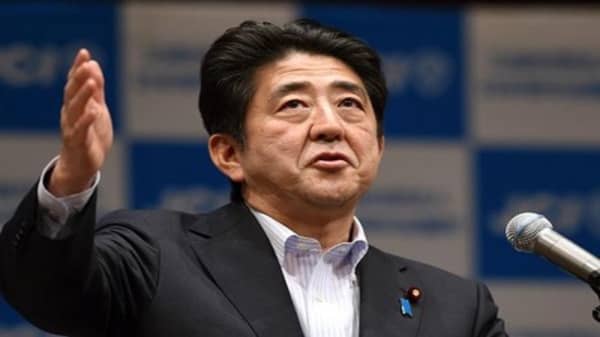The first involved aggressive monetary stimulus in the form of a stepped up bond-buying program by the Bank of Japan known as quantitative easing. Originally deployed by the Japanese central bank in 2001, U.S. central bankers adopted the strategy in 2008 to offset the credit crunch created by a global financial panic.
To further spur growth, Abe's second arrow called for massive government borrowing and spending; more than $100 billion was announced two years ago. The plan also called for borrowing roughly half that amount, further swelling a debt pile that is now more than twice the size of Japan's gross domestic product.
But the world has been waiting for Abe to unleash the "third arrow," a package of structural reforms critical to any revival.
Now, news of Japan's economic contraction comes amid signs that outside the U.S. the global economy is slowing. Once-rapid expansion in China and the developing world has cooled. Europe remains mired in an economic slog burdened by piles of bad debts weighing on its banking system.
Read More Why more Chinese stimulus may not be in the cards
Treasury Secretary Jack Lew warned last week ahead of a meeting of G-20 leaders that the world can't rely on the U.S. to drive global growth. Lew's assessment included comments aimed squarely at Abe.
"The first two arrows — monetary and fiscal stimulus — contributed to stronger growth in 2013, but growth has weakened this year as Japan stepped back from its efforts on the fiscal side," Lew told reporters. "The third arrow — structural reforms — has not been fully released."
And it remains to be seen just how far that arrow will fly.
The "third arrow" proposals aim to spur capital spending, boost private and foreign investment and offset the headwinds from Japan's shrinking labor force brought by a long-term shift in demographics that has left Japan with the heavy burden of caring for a rapidly aging population.
Read MoreMore stimulus coming after Japan GDP shocker?
To offset that ongoing drag on Japan's economy, Abe is seeking reforms in these key areas:
Private investment. At the top of the list is a cut in Japan's corporate tax rate, which is among the highest in the world. The reforms also include cutting regulations and promoting policies that help business start-ups, including public investment. That would also mean a shift away from government bailouts in failing companies. The government has created "special economic zones," to spark entrepreneurship, but the program has been slow to take hold.
The plan also calls for increased investment in stocks by Japan's massive public pension fund. The government also wants to double foreign direct investment in Japan by 2020.
Labor reforms: As Japan's workforce ages into retirement, Abe's government wants to ease labor shortages by putting more women to work. That means by providing better access to child care; the plan aims to eliminate day care center waiting lists by 2017 and urge employers to offer child care leave of up to three years. The plan aims to boost the employment rate of Japanese women aged 25 to 44 from the current 68 percent to 73 percent by 2020.
The government also wants to make it easier for foreign workers to come to Japan and find jobs. That means shortening requirements for permanent residency from five years to three.
Protective regulations: Japan has long insulated politically powerful domestic industries with a thicket of trade restrictions, subsidies and other regulations that make it hard for foreign firms to compete in Japan. Cutting those barriers would spur growth and boost opportunities for expanded trade.
Abe's "third arrow" calls for doubling exports from Japan's farms and fisheries by 2020. But those trade deals would mean dropping protections for Japanese farmers, a big reason Abe has been holding up completion of the U.S.-sponsored Trans-Pacific Partnership.





